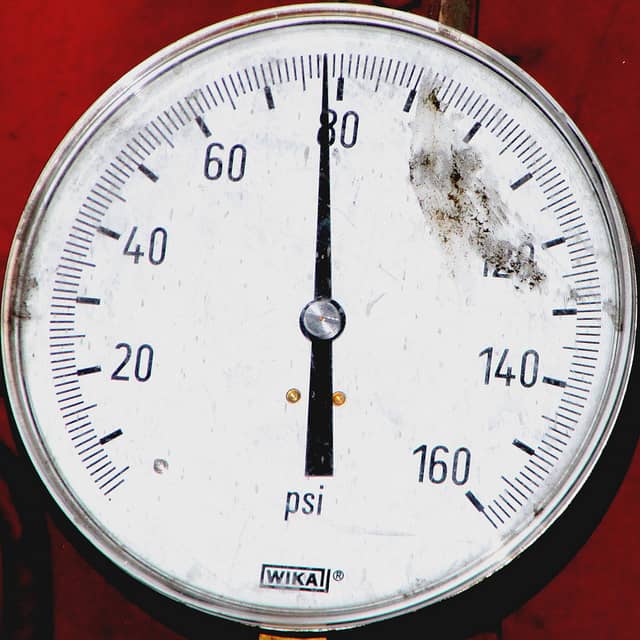What Does Low Blood Pressure Mean?

Photo: Mark Morgan
While people hear a lot about the negative effects of high blood pressure, something that doesn’t get as much attention but still can be a medical concern is low blood pressure. Blood pressure is the force exerted by the blood against the blood vessel wall. Low blood pressure, also known as hypotension, occurs when blood pressure is lower than it should be during and after a heartbeat. When this occurs, blood may not reach all parts of the body, including the heart and the brain, causing one to experience confusion, dizziness and and light-headedness.
There are three main types of low blood pressure:
- Severe hypotension
- Orthostatic or Postural
- Neurally Mediated Hypotension (NMH)
If you have severe hypotension (caused by shock, sudden loss of blood, infection, severe allergic reaction) – you need to go to the Emergency Room immediately (medical emergency, yikes!).
Orthostatic low BP, that generally is caused by a medication you may be taking. Consult your doctor to possibly reduce your dosage, or perhaps he/she will prescribe a different drug to lessen side effects.
Postural low blood pressure is more common, caused by standing up after prolonged periods of sitting or lying down. This is due to the blood in your legs pooling during the process of standing, because the bodily mechanism used to compensate for such an action (blood vessels constricting and hear rate rising to ensure blood continues to flow to the brain) fails, or performs poorly. As a result, your blood pressure falls and symtpoms ensue.
In the case of NMH, some solutions are: not standing for long periods, increasing salt intake, and drinking plenty of water. When someone has been sitting for a while, and blood pools in the lower portions of the body. When someone stands, this can cause symptoms of lightheadedness and dizziness. This form of hypotension can even cause fainting if someone’s blood pressure was too low to begin with and their body is not able to accommodate the change in pressure properly.
What causes hypotension?
There are several causes of low blood pressure. Some are situational and usually harmless, and others indicate a serious medical condition. Instances of low blood pressure in a healthy individual may be temporary and are generally not an indicator of a serious problem and therefore, would not require treatment or medical attention. Outlined below are some possible causes of both serious and non-life threatening types of low blood pressure…
More serious causes of low blood pressure:
- Moderate to severe bleeding
- Severe inflammation of internal organs
- Pulmonary embolisms and pericarditis (which is the inflammation of the sac surrounding the heart)
- A weakened heart muscle
- Anaphylactic shock, brought on by a severe allergic reaction
Common non-life threatening causes of low blood pressure:
- Dehydration
- A slow heart rate
- Prescription medications
- Standing after sitting for extended periods of time
- Painkillers, diuretics and alcohol can also temporarily lower blood pressure.
How can I check my blood pressure?
You can get a relatively cheap portable blood pressure monitor over at amazon for around $40.
What does low blood pressure look like?
There are two blood pressure readings that come from your blood pressure monitor. One (the higher reading) is you systolic, and the other (the lower reading) is diastolic. If either one of these numbers are low – not necessarily both – then you are considered to have low blood pressure. Systolic readins of 90 and below, and diastolic readings of 60 or below would be an indication of hypotension.
What are some natural ways to raise my blood pressure?
- Consume 10g of sea salt or himalayan pink salt per day (stay away from Dead Sea Salt and iodized salt (has no minerals))
- Drink plenty of water (your urine should be clear or faint yellow)
- Reduce intake of alcohol
- Stand or sit more slowly and carefully
Doctors frequently run tests to determine what is causing someone to experience frequent hypotension, as low blood pressure is more often a symptom of another condition. When looking for the causes of low blood pressure, doctors will generally frequently check a patients pulse rate and temperature. They may also run tests that check for infection, run a basic metabolic panel, and sometimes do chest and abdomen X-rays.
Since the symptoms of low blood pressure are usually symptoms of a larger, possibly more serious problem, treatment for hypotension may vary. Unfortunately, it’s more common that the symptoms of low blood pressure are treated rather than the underlying causes of low blood pressure itself.